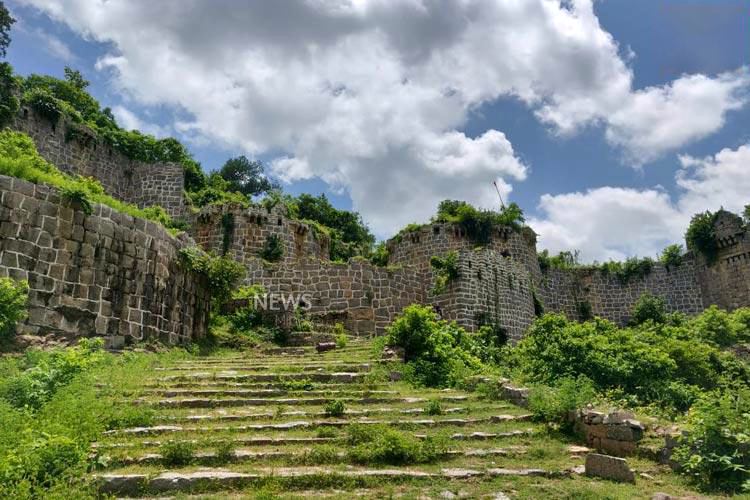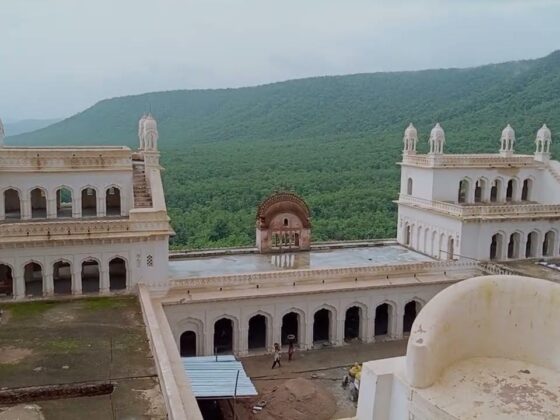Kowlas Fort: A Historical Marvel of Telangana’s Rich Heritage

Introduction
Kowlas Fort, an enduring emblem of history and architectural grandeur, is one of Telangana’s lesser-known yet highly significant forts. Located in the Kamareddy district, this fort stands as a testament to the region’s rich past, narrating tales of valor, strategic warfare, and cultural influences. Despite being overshadowed by more prominent forts in India, Kowlas Fort is a hidden gem that deserves exploration for its historical relevance, stunning architecture, and panoramic views of the surrounding landscapes.
Historical Significance
The history of Kowlas Fort is deeply intertwined with the rulers of Deccan India. The fort has witnessed multiple transitions of power, serving as a strategic military base and administrative center for several dynasties, including the Kakatiyas, Bahmanis, Qutb Shahis, and eventually the Asaf Jahis (Nizams of Hyderabad).
Early Origins
- Kowlas Fort is believed to have been established during the rule of the Kakatiya dynasty (12th-14th century CE), known for their impressive fortifications across the Deccan region.
- With the fall of the Kakatiyas, the fort fell into the hands of the Bahmani Sultanate in the 14th century, who further strengthened its defenses.
Mughal & Nizam Influence
- During the Mughal expansion under Aurangzeb in the late 17th century, Kowlas Fort played a crucial role in regional conflicts.
- Eventually, it became part of the Hyderabad State under the Nizams, who used it for administrative and defense purposes until the colonial era.
Architectural Features
Kowlas Fort showcases a blend of Hindu, Persian, and Islamic architectural influences, reflecting the diverse cultural influences of its ruling dynasties.
Fortifications & Layout
- The fort is built on a rugged hill, providing a natural defense against invasions.
- Massive stone walls, bastions, and watchtowers mark its periphery, showcasing military architectural prowess.
- The strategic placement of the fort allowed rulers to oversee the surrounding region, making it a key defensive stronghold.
Gates & Entrances
- The entrance to Kowlas Fort is marked by grand gateways adorned with intricate carvings and inscriptions.
- The main gates have defensive structures, including thick wooden doors reinforced with iron spikes to prevent breaches.
Temples & Mosques
- Kowlas Fort is home to ancient temples and mosques, illustrating the religious harmony that existed during its time.
- The fort houses an old Shiva temple, which is still visited by devotees today.
- Remnants of Mughal-era mosques reflect the influence of Islamic rulers.
Secret Passages & Water Reservoirs
- Like many medieval forts, Kowlas has secret tunnels and escape routes that were used during sieges.
- Several stepwells and water reservoirs within the fort ensured a continuous water supply for its inhabitants, showcasing advanced engineering.
Strategic Importance
Kowlas Fort played a crucial role in regional politics and military operations for centuries.
- Defense Against Invasions: The fort’s high vantage point and robust fortifications made it an impenetrable fortress against enemy attacks.
- Administrative Hub: Over different eras, it served as a center for governance, trade, and military strategies.
- Trade & Commerce: Due to its strategic location, the fort controlled important trade routes connecting northern Telangana with other Deccan regions.
Present-Day Condition & Tourism Potential
Despite its historical importance, Kowlas Fort has remained relatively unexplored compared to Telangana’s more famous forts like Golconda. However, in recent years, heritage enthusiasts and historians have taken an interest in reviving its legacy.
Preservation Efforts
- The Telangana government and heritage conservation groups have initiated efforts to restore parts of the fort.
- Local historians advocate for greater recognition of Kowlas Fort as a heritage tourism site.
Visiting Kowlas Fort
- Location: Kamareddy district, Telangana, India.
- Best Time to Visit: October to February, when the weather is pleasant for trekking and exploration.
- Attractions Nearby: The fort is close to various heritage sites, temples, and natural landscapes that complement a day trip.
Conclusion
Kowlas Fort stands as a significant yet underappreciated monument in Telangana’s historical landscape. Its rich past, architectural splendor, and strategic importance make it a treasure trove for history buffs and adventure seekers alike. While efforts are being made to restore and promote the fort, greater awareness and tourism initiatives could help preserve its legacy for future generations.
For those fascinated by medieval history, fort architecture, and cultural heritage, Kowlas Fort offers an unforgettable journey into Telangana’s past. Whether you are a history enthusiast, a photographer, or an adventurer, this ancient stronghold is worth a visit to witness the echoes of time engraved in its majestic walls.









